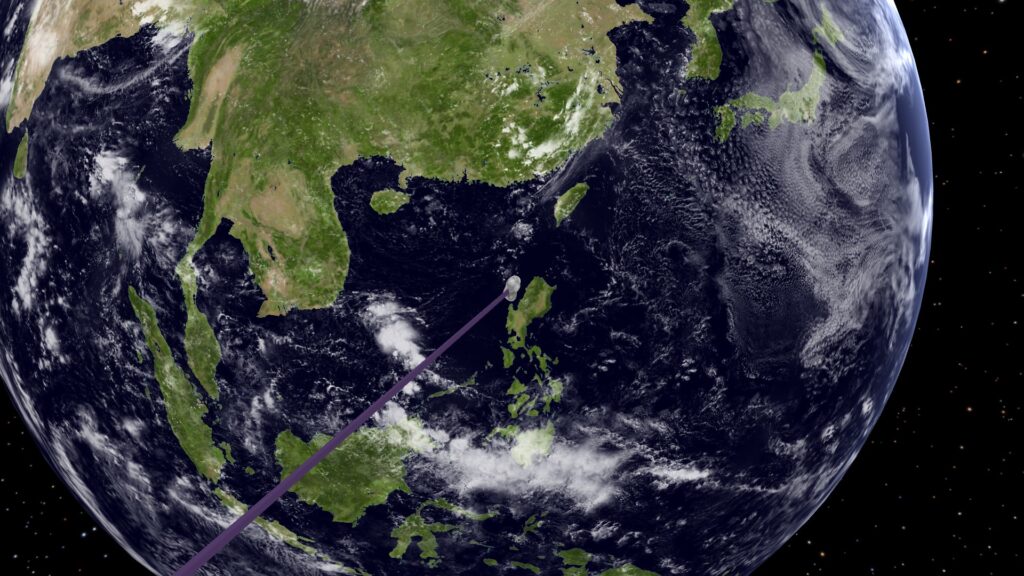This video shows the motion of the Solar System relative to the nearest stars. You can clearly see the direction of the Sun motion.
While the planets are orbiting the Sun, the Solar System moves in space. Therefore, the trajectories of the planets look like helical lines. Being on the Earth, we certainly do not notice that we are moving along a helical trajectory. But high-precision instruments allow you to see how the nearest stars shift relative to more distant stars during the year. If you observe the nearest stars for decades, then their apparent trajectories relative to more distant stars will also look helical. This parallactic shift of position confirms the helical nature of the Earth’s motion.
The speed of the Solar system relative to the nearest stars is about 20 km/s. Relative to the center of the Milky Way Galaxy, the speed of the Solar System is much higher.
The Solar System moves in space with its north pole forward, but at a certain angle. The orbit of the Sun relative to the center of the Galaxy lies almost in its plane.
The imaginary point (antiapex) from which the motion of the Solar System is directed is located in the Columba constellation. This constellation is located next to the Canis Major constellation with brightest star Sirius. Also nearby is the beautiful constellation of Orion. In this direction the stars are closing together if observations are carried out for hundreds of thousands of years.
The Solar System is flying towards an imaginary point (apex), which is located in the Hercules constellation. The Apex is located near the Lyra constellation with the bright star Vega. In this direction the stars part if observations are made for hundreds of thousands of years.
When we talk about the motion of the Solar System relative to the stars, we mean the motion of the barycenter of the Solar System. The motion of the Sun relative to the center of mass of the Solar System was discussed in more detail in the previous video: The Sun Motion Relative to the Barycenter of the Solar System.
Not only planets revolve around the center of mass, but also the Sun itself. These fluctuations of the Sun can be clearly seen if you look along the trajectory of the Solar system at high zoom. These fluctuations are clearly shown in this video, if you look along the trajectory of the Solar system at high zoom.
With the help of high-precision instruments, similar fluctuations relative to a rectilinear trajectory can be observed in some nearby stars. By the nature of the oscillations, it is possible to conclude about the presence of planets near the star and even calculate their masses.
Watch the video with subtitles.
Modeling and rendering were performed using own software. The calculations took into account the mutual influence of the Sun and all the planets of the Solar System on each other.
The track ‘Grass’ by Silent Partner sounds in this video.





